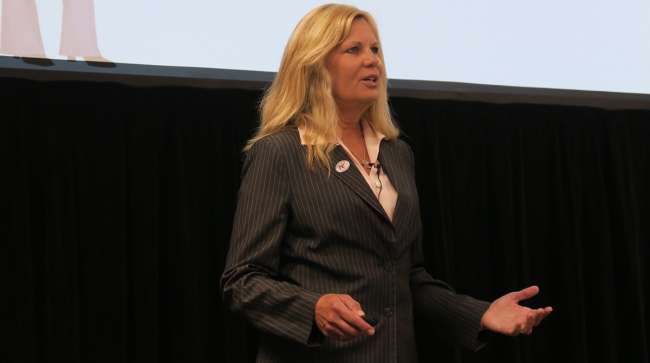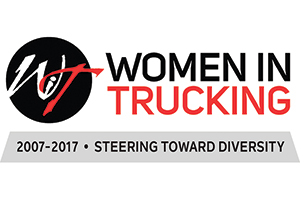Staff Reporter
Emphasizing Importance of Trucking Could Draw More Women to Industry

ATLANTA — Trucking companies can do their part to redress the shortage of female workers by emphasizing the importance of the industry as a whole, according to Ellen Voie, president of the Women In Trucking Association.
The trucking industry has a dearth of female employees. Although the U.S. Department of Labor recorded that women make up 47% of the workforce, Voie said that less than 7% of drivers in the trucking industry are women. Voie spoke at the McLeod Software User Conference on Sept. 18.
One step in leveling the balance of the workforce is to make the importance of the industry abundantly clear, Voie said.

“One of the things I don’t see this industry doing enough, especially for the driver population, is talking about the importance of the job. Why aren’t we talking about how this job feeds families or puts fuel in your tank?” Voie said. “I think we’d get more women in the industry if we could do that because we’re not talking about the economic impact the transportation industry has on our country. We’re feeding your family and your neighbor’s family, and that’s how important this job is.”
Attracting more women could also help fix the driver shortage the industry faces as a whole. The trucking industry is short 48,000 drivers, according to American Trucking Associations.
Voie said that the average age of female drivers is 52, and that most women get into trucking because their families have a history in the industry. She said husbands, boyfriends and dads usually are the ones that introduce women who later become truck operators to the world of freight.
This “home time” helps women become more familiar with the industry than their male counterparts who have no such exposure. For this reason, Voie said recruiting campaigns should extend to women as much as they do to men.
Women Take a Leading Role in an Evolving Trucker Industry - Future of Business and Tech https://t.co/JvU1po43AE — WomenInTrucking (@WomenInTrucking) September 17, 2017
Despite the shortage of female employees, Voie said that advertising campaigns for trucking positions generally cater to a male audience. For example, she referenced ads for positions that tout working hours with slogans such as “Get home to your wife.” She said simply changing “wife” to “spouse” would result in a more inclusive campaign that may recruit more women.
Voie also said men usually leave their trucking jobs because they want more time at home, and women usually leave because they do not find the equipment safe or ergonomically correct.
“We’re attracting people that have no clue. They come into this industry and they don’t really get it,” Voie said. “Men are saying ‘I want to be home’. Women say ‘I already knew that.’ ”
Amber Heaton, marketing director of James R. Smith Trucking Co., said she valued Voie’s advice on how to recruit female drivers. James R. Smith Trucking, based in Cullman, Ala., was founded in 1955 by Heaton’s grandfather. The company has about 120 trucks, Heaton said. She works there with her mom, husband, two aunts and uncle.
“We’re all there,” Heaton said. “The biggest thing that we’ll probably take back from this is how to attract female drivers and focusing on what female drivers do in their community.”
WIT, which was founded in 2007, offers resources to broaden the understanding of women’s issues in transportation. Voie said the association is setting up an online social platform for people with similar job responsibilities to mentor each other. They also are publishing a best practices guide, for which they studied carriers that have a high level of female drivers.
WIT’s efforts target young girls in addition to women who are searching for a job. For example, Voie said she is working to produce a truck driver doll named Claire. The association also created a transportation patch for Girl Scouts. WIT designed the curriculum for earning the patch; Voie said more than 400 girls have earned it.




